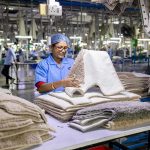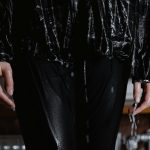When you choose clothing labeled as “wicking,” you’re picking fabric designed to pull moisture away from your skin. This isn’t just about absorbing sweat—it’s about moving it so you stay dry and comfortable. Understanding how this process works can change the way you select gear for workouts or outdoor activities. But what exactly happens inside the fabric that makes wicking so effective?
Table of Contents
Key Takeaways
- Wicking refers to a fabric’s ability to draw moisture away from the skin to keep the wearer dry.
- It uses capillary action to pull sweat through fibers and promote evaporation at the fabric’s surface.
- Common wicking materials include synthetic fibers like polyester and natural fibers like merino wool.
- Wicking fabrics enhance comfort, regulate body temperature, and reduce skin irritation during physical activity.
- Proper care includes washing with cold water and avoiding fabric softeners to maintain wicking performance.
Definition of Wicking in Textiles
Wicking in textiles refers to the fabric’s ability to draw moisture away from your skin and move it to the outer surface, where it can evaporate quickly.
When you wear clothing with wicking technology, it actively manages moisture control, keeping you dry and comfortable even during intense activities. This technology uses specially designed fibers that pull sweat away from your body, helping to regulate temperature and prevent discomfort caused by dampness.
You’ll find wicking fabrics in athletic wear, outdoor gear, and everyday clothing designed for active lifestyles. By choosing garments with effective wicking properties, you reduce skin irritation and enhance performance.
Understanding this definition helps you appreciate how moisture control works in your clothes, making your outfits smarter and more functional.
The Science Behind Moisture Movement
Understanding how moisture moves through fabric helps you see why wicking works so effectively.
Moisture dynamics play a key role in how water travels from your skin to the outer surface of clothing. Textile engineering designs fabrics that optimize this process, ensuring you stay dry and comfortable.
Moisture dynamics are crucial for moving sweat from skin to fabric surface, keeping you dry and comfortable.
Here’s how moisture movement works:
- Absorption: The fabric first absorbs sweat from your skin.
- Transport: Capillary action pulls moisture through tiny channels in the fibers.
- Evaporation: Moisture reaches the fabric’s surface and evaporates into the air.
Advantages of Wearing Wicking Fabrics
When you wear wicking fabrics, you’ll notice how they keep moisture away from your skin, helping you stay dry and comfortable.
This moisture management boosts your performance by regulating body temperature during activity.
Let’s explore how these fabrics enhance both comfort and functionality in your everyday wear.
Moisture Management Benefits
Several key benefits come from wearing fabrics designed to pull moisture away from your skin.
These wicking fabrics enhance moisture evaporation, keeping you dry even during intense activity. They also assist in temperature regulation by moving sweat to the fabric’s surface, where it cools quickly.
Here are three moisture management benefits you’ll appreciate:
- Faster moisture evaporation prevents that sticky, clammy feeling.
- Improved temperature regulation helps maintain comfort whether you’re hot or cold.
- Reduced risk of chafing and irritation due to less dampness on your skin.
Comfort and Performance Enhancements
Because wicking fabrics keep moisture away from your skin, they greatly boost both comfort and performance during physical activity.
When you wear clothing with advanced comfort technology, sweat dries quickly, preventing that sticky, uncomfortable feeling. This lets you focus on your workout or sport without distractions.
Performance fabrics are designed to regulate your body temperature, keeping you cool when it’s hot and warm when it’s cold. You’ll notice less chafing and irritation because these fabrics stay dry and smooth against your skin.
Plus, their lightweight, breathable nature enhances your mobility, so you move freely. By choosing wicking fabrics, you’re investing in gear that supports your body’s needs, helping you perform at your best while staying comfortable throughout your activity.
Common Materials That Exhibit Wicking
Fabrics like polyester, nylon, and merino wool excel at wicking moisture away from your skin, keeping you dry and comfortable during physical activities.
When choosing clothing with effective wicking properties, consider these common materials:
- Synthetic fibers: Polyester and nylon are popular synthetic fibers known for their excellent wicking and quick-drying capabilities, making them ideal for activewear.
- Natural materials: Merino wool stands out among natural materials for its ability to wick moisture while regulating temperature and resisting odors.
- Blended fabrics: Combining synthetic fibers with natural materials often enhances wicking performance and comfort, balancing durability and breathability.
How Wicking Differs From Absorbency
Although wicking and absorbency both involve handling moisture, they work in very different ways. Wicking techniques move moisture away from your skin to the fabric’s surface, where it can evaporate quickly. Absorbency, on the other hand, simply soaks up moisture and holds it in the fabric. Understanding this absorbency comparison helps you choose clothing that matches your activity and comfort needs.
| Feature | Wicking Techniques | Absorbency Comparison |
|---|---|---|
| Moisture Action | Moves moisture away | Holds moisture in |
| Drying Speed | Faster evaporation | Slower evaporation |
| Comfort Level | Keeps skin dry and cool | Can feel damp or heavy |
This difference means wicking fabrics suit active wear, while absorbent fabrics work better for casual use.
Practical Uses of Wicking in Clothing
When you wear sportswear with wicking properties, it helps manage moisture by pulling sweat away from your skin to keep you dry and comfortable.
Outdoor apparel also benefits from wicking fabrics by regulating body temperature during varying weather conditions.
Understanding these practical uses shows why wicking is key in performance and comfort gear.
Sportswear Moisture Management
Since staying dry can make all the difference during a workout, sportswear uses wicking technology to pull moisture away from your skin quickly. This process relies on breathable fabrics that enhance sweat evaporation, keeping you comfortable and focused.
Here’s how it benefits you:
- Improved Comfort: Moisture doesn’t cling to your skin, reducing irritation and chafing.
- Temperature Regulation: As sweat evaporates faster, your body cools efficiently, preventing overheating.
- Enhanced Performance: Staying dry helps maintain your energy and concentration throughout exercise.
Outdoor Apparel Benefits
Wicking technology doesn’t just benefit sportswear; it plays an essential role in outdoor apparel as well. When you’re tackling outdoor activities like hiking, camping, or climbing, your clothing needs to manage moisture efficiently to keep you comfortable.
Wicking fabrics pull sweat away from your skin, helping you stay dry even in unpredictable climate conditions. This moisture management prevents chafing and reduces the chill that comes from damp clothes in cold weather. Plus, it helps regulate your body temperature, so you’re neither overheating nor freezing.
Whether you’re facing humid summers or chilly mountain air, wicking materials adapt to keep you comfortable. Choosing outdoor apparel with wicking properties means you can focus more on your adventure and less on discomfort caused by sweat and moisture.
Enhancing Clothing Performance With Wicking
Although moisture management might seem like a small detail, it greatly boosts your clothing’s comfort and performance. Wicking technologies and fabric innovations work together to keep you dry and comfortable, especially during intense activities.
Here’s how they enhance your clothing’s performance:
- Rapid Moisture Transfer: Advanced fabrics pull sweat away from your skin to the garment’s surface, where it evaporates quickly.
- Temperature Regulation: By managing moisture effectively, wicking fabrics help maintain your body temperature, preventing overheating or chilling.
- Improved Durability and Comfort: Innovations in fabric design guarantee wicking materials remain lightweight, breathable, and resistant to odors, so you stay fresh longer.
Frequently Asked Questions
Can Wicking Fabrics Be Recycled or Are They Environmentally Friendly?
You can recycle some wicking fabrics, especially those made from sustainable materials. Choosing eco friendly practices helps reduce waste, so look for brands prioritizing recyclability and sustainability to make your clothing choices more environmentally responsible.
How Do Washing and Drying Affect Wicking Fabric Performance?
Imagine rain slipping off leaves—washing techniques like cold water and gentle cycles keep your fabric’s wicking power strong. Avoid high heat drying; air-drying preserves those moisture-moving fibers, so your gear stays fresh and effective longer.
Are There Any Drawbacks to Wearing Wicking Fabrics Daily?
You might find wicking fabrics offer great moisture management and comfort daily, but they can sometimes feel less breathable or cause skin irritation. Also, their fashion style is limited compared to traditional fabrics, which may affect your wardrobe choices.
Can Wicking Fabrics Cause Allergic Reactions or Skin Sensitivities?
If you have sensitive skin, wicking fabrics might cause irritation depending on their fabric composition. Some synthetic fibers or chemical treatments can trigger allergic reactions, so always check materials and test garments before wearing them extensively.
Do Wicking Properties Diminish Over Time With Regular Use?
Yes, wicking properties can diminish over time, especially without proper fabric maintenance. To extend your wicking lifespan, you should wash your clothes gently, avoid fabric softeners, and follow care instructions closely.
- Nonwoven Fabric vs. Paper: A Comparison of Properties - July 11, 2025
- The Role of Nonwoven Fabrics in Filtration Systems - July 11, 2025
- Can You Recycle Nonwoven Polypropylene Bags? - July 11, 2025







